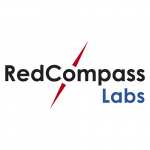How to Manage, Build and Update Your Payment Hub So It Is Ready For Tomorrow (ISO 20022, Instant Payments And More)
As the world of payments shifts, banks need to keep up – and payment hubs are no exception. If you process payments, the time to rethink your hub was probably yesterday.
Payment hubs aren’t exactly new news, but a lot of things have changed in the world of payments since they were first introduced about two decades ago. It seems obvious to point out developments like cryptocurrencies and central bank digital currencies, or even the smattering of new regulations. Also notable is that payments hubs have not been optimised for the heightened costs and rocketing volumes of payments as consumers have gone increasingly digital. It could therefore be said that the original payments hubs were designed for a totally different world.
And these considerations are just the tip of the iceberg when it comes to payments hubs. As the world of payments shifts, banks need to keep up – and these systems are no exception. If you process payments, the time to rethink your hub was probably yesterday.
But what are payments hubs?
If you put this question to a group of payments experts, you’ll receive just as many definitions – but that’s simply because payments hubs are different things to different organisations. It depends on their strategic aims, payment volumes, who they work with, and what they want to do with their data.
Originally, a payments hub was a solution built to facilitate the full payments process for a specific bank or specific lines. While they successfully consolidated siloed functions and helped to reduce costs, these systems were difficult and expensive to maintain, and therefore were generally only adopted by larger institutions.
However, over the years, the concept of a payments hub has become more fluid. Basically, banks are trying to extract more and more of the functionalities out of a payments hub. And they want to make sure that their payments hubs are only used to do the actual payment processing, delegating some of the other functionalities to other solutions. Payments hubs are essentially becoming deconstructed.
But it doesn’t have to be this way. Modern payments hubs, or solutions designed to integrate with them, can adapt to instant payments, ensure regulatory compliance, and even detect fraud. Other benefits come from reducing the likelihood of human error, centralised control, and better agility and competitiveness for when it comes to meeting customers’ or clients’ needs.
Why should you care?
Whether you’re looking to upgrade existing infrastructure or to start from scratch, modern payments hubs can solve many of the issues that banks are facing today.
Take ISO 20022. We all know that the deadline is looming for this switch from SWIFT’s MT messaging to the newer MX format. The staggered timings for its implementation mean that there’ll be a transitional period where both formats are in use – and banks will therefore need to translate between MT and MX, which presents all kinds of challenges. Despite this being an inevitability, many banks are dragging their feet when it comes to preparing for this change. But many hubs are already ISO 20022-compliant – and can help with other regulatory requirements.
Instant payments is another area where payments hubs can make a difference. We all saw how cash payments were abandoned across the world in the wake of the pandemic, not to mention rocketing e-commerce rates. But where does this leave banks? Most are largely unprepared, as their infrastructure is designed to deal with batch processing.
Payments hubs can also assist with fraud detection. Payment process control software, for example, can block erroneous payments or accidental duplicates, while sanctions screening capabilities can safeguard money from being transferred to blacklisted entities. And as a central repository for all payments data, these systems also make auditing or parsing through data to screen for anomalies much more straightforward.
Taking the next steps
Knowing what you can achieve with these hubs is one thing, but what about its implementation? There’s a whole other set of obstacles to overcome here as well. With these kinds of digital transformations, there are two types of approaches: either gradual or a complete overhaul. We always recommend the former. Replacing the legacy system entirely comes with masses of testing and complexity, consuming a lot of time and money before you can move from system A to B. And it’s only at that latter point in time when you’ll discover if that system is actually fit for purpose – and whether it will remain so for the years to come is another question entirely.
The granular, hybrid approach, where updated processes are grafted onto the legacy payments hub, circumvents those issues. And that’s probably why it’s proving increasingly popular. Some banks think that you need to go to a native hub vendor for this – but that’s a huge misconception.
Banks have also faced perpetual disappointments with these vendors – the banks are tired of unmet promises and want to take back control. They want to shrink down the footprint of these payments vendors and their black boxes, thereby bringing more components in house.
Where RedCompass Labs can come in is stepping into that gap in the middle. And as the vendors’ space shrinks, we fill in the moat around that old-fashioned castle with readymade, bespoke components that can help give control back to the banks.
What should banks keep front of mind when it comes to updating their payments hubs?
- Consider exactly what you want to get out of your hub in the first place. Break down your needs, work out what is the most urgent, and then find the best solutions.
- Ensure that there is architectural alignment and that the new solutions are flexible, fast, and affordable.
- A two- to three-year roadmap is crucial. If you don’t know where you’re going, you’ll end up somewhere completely wrong.
- Learn the lessons of the banks suffering from headaches with mountains of legacy infrastructure. Set things up to be more competitive and architecturally scalable from the get-go.
Working with a trusted partner, who can use their expertise to integrate your payments hub with new functionalities, will let you hit the ground running.
RedCompass Labs’ has extensive expertise with this kind of payments integration. If you need some support with the evolution of your payments hub, get in touch with our team today.
Share this post
Written by

RedCompass Labs
Resources





